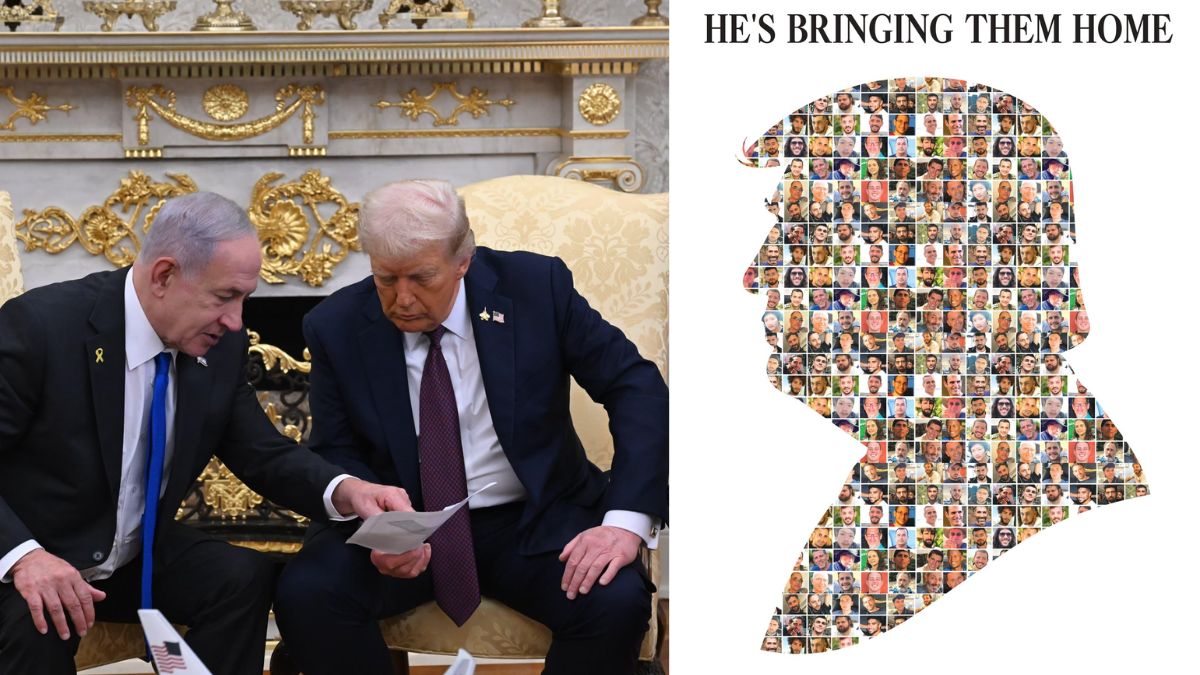In a big breakthrough towards ending the Gaza conflict, the Israeli war cabinet on Friday (October 9, 2025) approved the outline of a deal that laid the groundwork for the release of hostages held in Gaza. The decision involved accepting a phased exchange under which women, elderly civilians and potentially injured hostages would be freed in return for Palestinian prisoners.
The plan included a temporary cessation of hostilities and increased humanitarian access to Gaza, marking one of the most significant policy shifts since the conflict began. A brief statement from PM Benjamin Netanyahu’s office said the Cabinet approved the “outline” of a deal to release the hostages.
It did not have any mention about the other aspects of the plan that are more controversial.
Gaza war: Is an end looking near?
As diplomatic momentum built across the Middle East and beyond, the first phase of a Gaza peace plan took shape through a series of coordinated developments involving Israel, the United States, key mediating nations in the middle east. Both Israel and Hamas on Thursday (October 9, 2025) agreed to the first phase of the Gaza peace plan.
The development came just a few days after US President Trump released his 20-point peace plan for war-torn Gaza. Now, the approval of a hostage-release framework, Trump’s announcement of a ceasefire plan, and PM Narendra Modi’s endorsement together signal a turning point in efforts to end the conflict.
Gaza fell prey to a deadly conflict in the aftermath of the October 7, 2023 Hamas attacks on Israel which killed somewhere around 1200 people. In the 2 years of ongoing conflict, around 67,000 Palestinians have lost their lives.
What agreement did the Israeli cabinet approve?
While the specifics of the numbers involved were not disclosed, officials indicated that the first phase was designed to build confidence and enable negotiations on further releases. The approval followed intense consultations with military officials, security advisers and allied partners.
US President Donald Trump declared that the first phase of a peace plan for Gaza had effectively ended the war. He said the release of hostages was expected to begin the following week, under an agreement he said would be formally signed in Egypt.
Israel-Hamas ceasefire: What Trump said?
Trump credited mediators from Egypt, Qatar and Turkey for helping broker the arrangement. He framed the development as a diplomatic breakthrough that would halt fighting and open the door to broader negotiations. He also suggested that the deal included provisions for the withdrawal of Israeli forces from key areas once the initial exchanges were carried out.
“Last night, we reached a momentous breakthrough in the Middle East, something that people said was never going to be done. We ended the war in Gaza, and I think it’s going to be a lasting peace, hopefully, an everlasting peace. We secured the release of all of the remaining hostages, and they should be released on Monday or Tuesday,” he said.
How did PM Narendra Modi respond to the plan?
Prime Minister Narendra Modi congratulated Donald Trump on what he described as the successful conclusion of the first phase of the historic Gaza peace plan. Modi said he had spoken to Trump directly and welcomed the agreement as a step toward stability in West Asia.
During the conversation, the two leaders also discussed the future of bilateral trade ties and the possibility of fast-tracking economic cooperation. Modi’s remarks underscored India’s broader position in favour of dialogue, de-escalation and humanitarian relief for civilians affected by the conflict.
By endorsing the initial phase of the agreement, India signalled support for multilateral diplomacy involving both regional countries and global powers.
Israel-Hamas peace plan: Who were the key mediators?
The plan took shape with the support of Qatar, Egypt and Turkey – countries that have maintained lines of communication with both Israel and Hamas. Cairo, in particular, was expected to host the signing of the initial agreement. These governments played a facilitative role in finalising the terms relating to the pause in hostilities and the structure of hostage-prisoner exchanges.
Their involvement also reflected an attempt to link humanitarian considerations with political dialogue, a strategy long advocated by international partners.
The initial phase of the agreement focused on stopping active combat, securing the first batch of hostage releases and ensuring humanitarian aid corridors into Gaza. Further phases were expected to cover additional releases, long-term ceasefire conditions and reconstruction mechanisms.
Worth noting here is that the convergence of actions, from Israel’s cabinet approval and Trump’s declaration to India’s diplomatic endorsement, is a signal of a rare moment of alignment on a deeply divisive issue. For countries invested in stability across West Asia, the first phase is both a test case and a blueprint for possible long-term arrangements.
